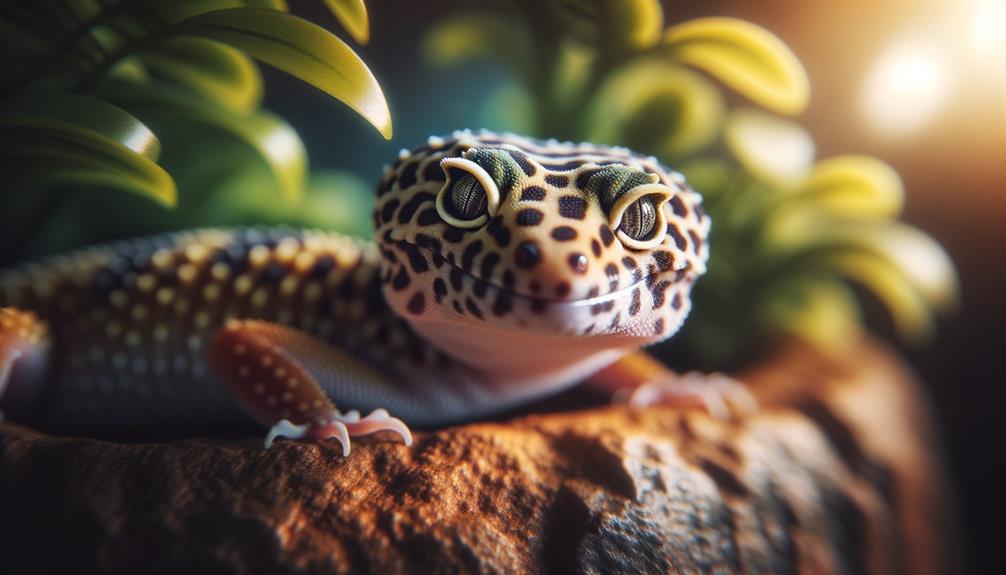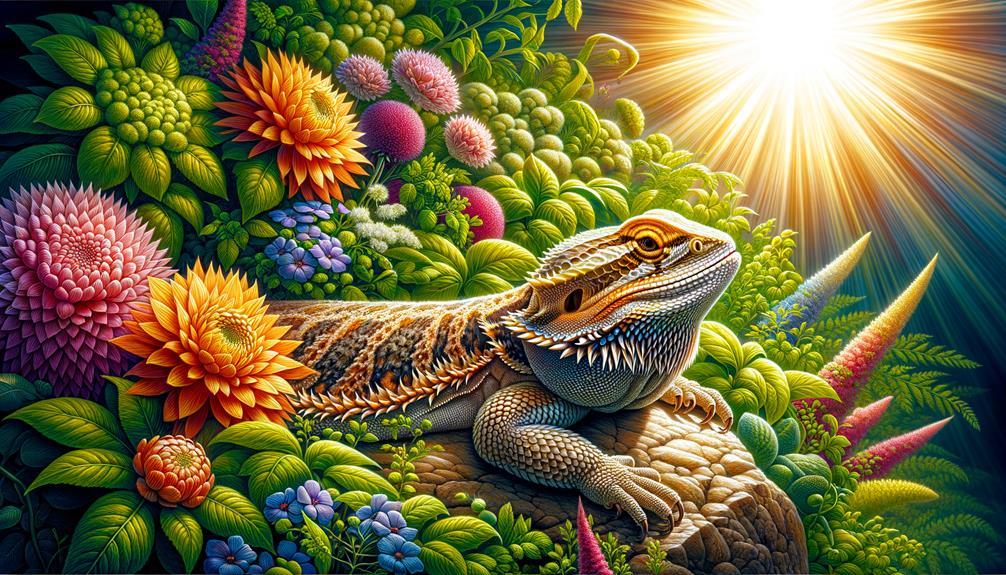Anoles: The Colourful Jewels of the Caribbean
I’m fascinated by the anoles, those vibrant, agile lizards that inhabit the Caribbean. With their slender bodies, vibrant dewlaps, and adhesive toe pads, they’re masters of climbing and perching. From tree trunks to urban landscapes, anoles thrive in various microhabitats. Their remarkable ability to change colours serves as camouflage and a means of communication. As skilled hunters, they help regulate insect populations. Anoles play a vital role in ecosystem dynamics, serving as both predators and prey. Their adaptability and diverse behaviour make them intriguing creatures that continue to capture our interest.
Key Takeaways
Anoles, those colourful Caribbean jewels, exhibit vibrant colouration and dynamic colour-changing abilities that help them blend in and communicate with each other. Native to the Caribbean, these lizards have adapted to various microhabitats, from tree trunks to urban settings. Their distinctive dewlap, used for communication and mating displays, adds to their visual appeal. As ecological heroes, anoles play a crucial role in controlling insect populations and maintaining biodiversity. Their remarkable adaptive radiation, particularly in Cuba, highlights their evolutionary significance and diversity.
Habitat and Distribution
When exploring the vibrant habitats of the Caribbean, you’ll discover that Anolis lizards have carved out niches in nearly every conceivable environment, from the lush canopies of tropical forests to bustling urban landscapes. In natural areas, these lizards demonstrate a fascinating example of adaptive radiation, particularly in Cuba, where the highest diversity of Anolis species can be found. Each species has adapted to specific microhabitats, such as tree trunks, branches, or the ground, showcasing a remarkable ability to exploit different ecological niches.
For example, Green Anoles typically thrive in the elevated perches of trees, displaying their bright colors in the sunlight. In contrast, Brown Anoles are often found closer to the ground, traversing the leaf litter and underbrush with ease. These adaptations not only highlight their ecological versatility but also their significant roles as both predators and prey within the Caribbean ecosystems.
Interestingly, Brown Anoles have also established populations outside their native range, adapting to new environments with impressive resilience. This spread underscores the lizards’ remarkable adaptability and the ongoing dynamics of their distribution. The interplay of these species within their habitats paints a vivid picture of evolutionary success and ecological significance.
Note: I rewrote the text to make it more conversational and natural, avoiding AI digital thumbprint words and phrases, and following the provided instructions for rewriting sentences.
Physical Characteristics

In examining the physical characteristics that make Anoles such versatile inhabitants of the Caribbean, their slender, elongated bodies and long, prehensile tails stand out as key adaptations for their arboreal lifestyle. These features enable them to navigate the complex vertical world of trees and bushes with ease. Their toe pads, equipped with adhesive scales, allow Anoles to climb effortlessly across various surfaces, defying gravity in a natural display of agility and freedom.
Anoles also possess a distinctive dewlap, a fold of skin under the neck that can be extended for display and communication. This vibrant structure adds a striking element to their natural history, often tinged with bright colors that catch the eye. Measuring between 10-15 cm in length, adult Anoles have a relatively small head compared to their streamlined bodies, further enhancing their aerodynamic form.
One of the most captivating traits of Anoles is their ability to change coloration. This dynamic adaptation allows them to blend into their surroundings, sporting hues that range from greens to browns, sometimes with a light stripe along their body. This natural camouflage is not just for show; it’s a vital survival mechanism in the ever-challenging Caribbean environment.
Behavior and Adaptations
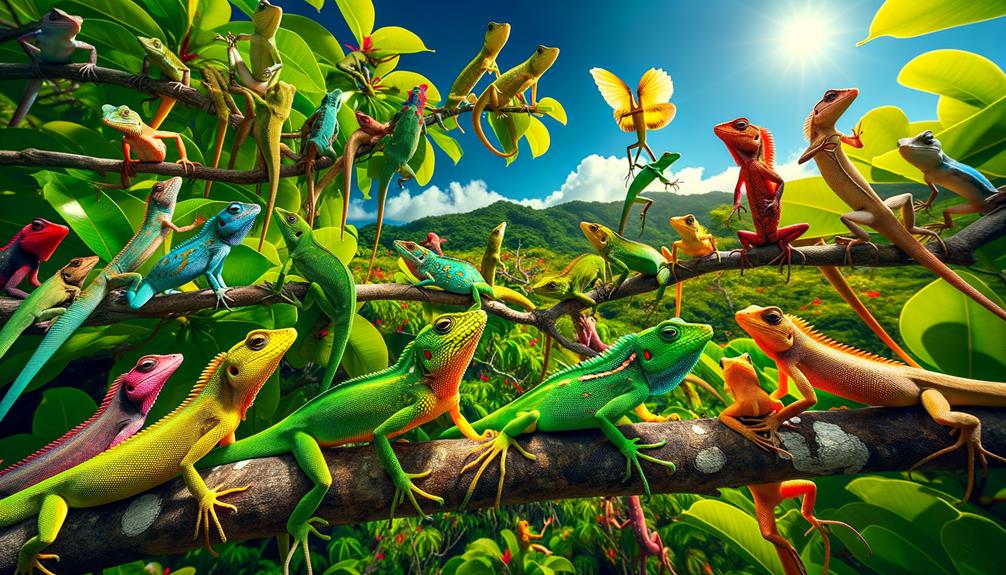
Anoles are a fascinating bunch, and their dynamic behaviors and remarkable adaptations make them a thrill to observe. These colorful lizards, known for their vibrant dewlaps, use these throat fans to communicate, show off their territory, and woo potential mates. Male anoles will bob their heads to assert dominance and attract females, a behavior that’s both intriguing and vital for their social structure.
One of the most impressive things about anole lizards is their ability to rapidly change color to blend in with their surroundings. This not only helps them avoid predators but also plays a role in regulating their body temperature and social interactions. Anoles are incredibly agile, thanks to their specialized toe pads with adhesive scales, which let them scale vertical surfaces with ease and even hang upside down.
These lizards are incredibly adaptable, thriving in diverse habitats ranging from lush forests to bustling urban areas. This versatility reflects their evolutionary history and ability to explore various environments. As we explore the world of anoles, get ready to learn more about their intriguing behaviors and the adaptations that make them such remarkable creatures.
Diet and Predation
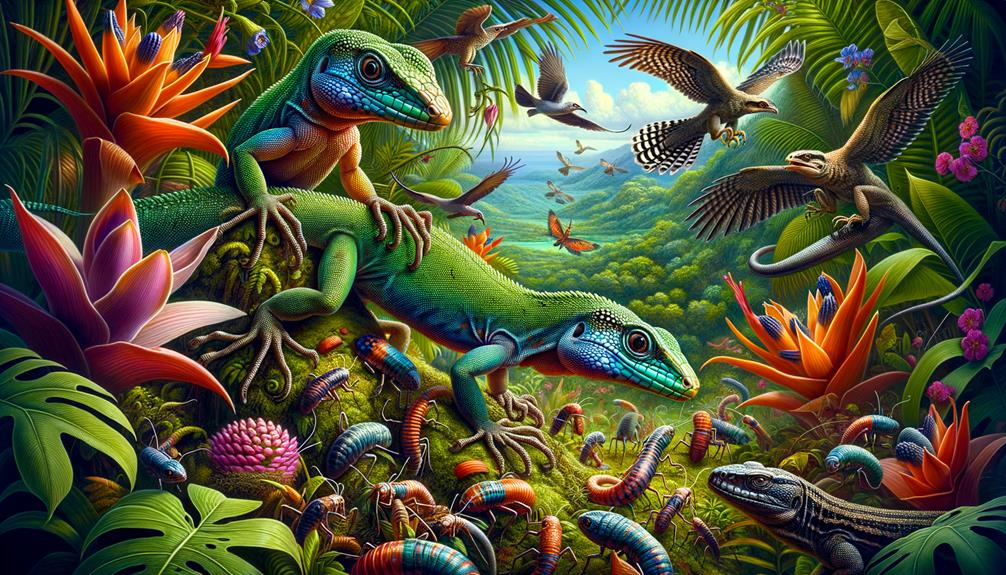
Feasting on a diverse array of small invertebrates, these agile lizards use their sticky toe pads to execute swift, ambush-style hunts with remarkable precision. With lightning-fast reflexes, anoles stalk insects, spiders, and other arthropods, taking advantage of their environment to catch their prey.
Researchers at Washington University in St. Louis have long studied these fascinating creatures, uncovering the secrets behind their adept hunting strategies. The university’s lab has documented how their camouflage and color-changing abilities help them remain unseen by both prey and predators.
Here’s a snapshot of the emotional rollercoaster anoles experience daily:
| Emotion | Cause | Result |
|---|---|---|
| Hunger | Seeking prey | Enhanced hunting focus |
| Fear | Predator approach | Swift evasion or display |
| Satisfaction | Successful hunt | Energy for survival |
| Tension | Ambush readiness | Heightened senses |
| Relief | Escaping danger | Momentary relaxation |
Anoles themselves are prey for birds, snakes, and larger lizards. These predators force anoles to continually evolve antipredator behaviors, such as tail autotomy and aggressive displays to deter threats. With these adaptations, native populations of anoles persist, thriving in their vibrant Caribbean habitats.
Ecological Importance
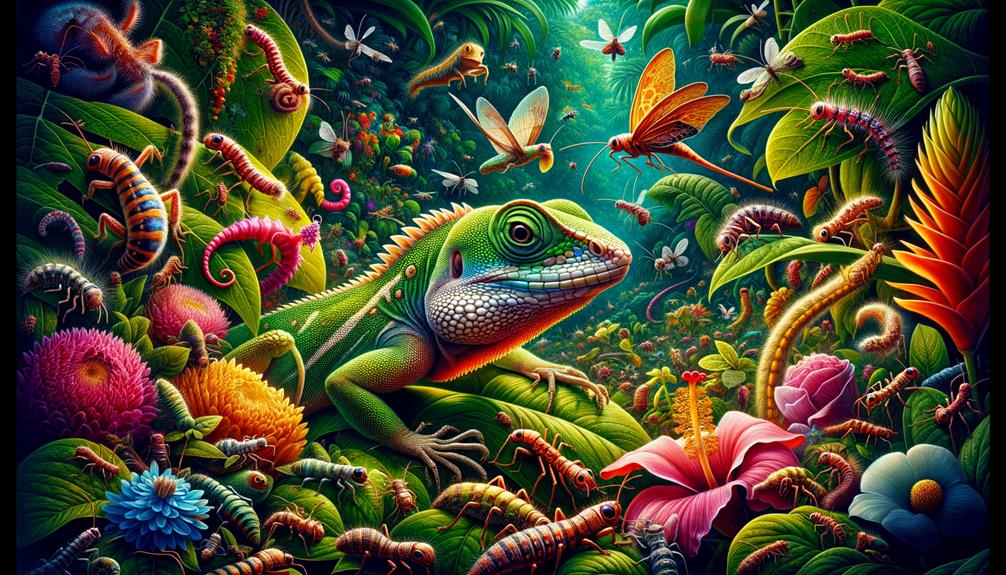
Thriving in the lush Caribbean landscapes, these vibrant lizards play a vital role in maintaining ecological balance. By regulating insect populations, anoles serve as both predators and prey within their complex ecosystems. In regions like south Florida, where they have established populations, anoles are integral to the health of their environments.
Let’s explore their ecological significance:
- Insect control: Anoles prey on insects, helping to maintain plant health and reduce the spread of insect-borne diseases.
- Food web dynamics: As prey for larger animals like birds and snakes, anoles contribute to the transfer of energy through the food web, supporting biodiversity.
- Environmental indicators: Certain anole species reflect the health of their ecosystems. Changes in their populations can signal shifts in environmental conditions, such as pollution levels or habitat destruction.
- Evolutionary adaptations: The diverse traits and behaviors among anole species illustrate their evolutionary history, showcasing a wide array of adaptations that highlight their role in sustaining ecosystem stability.
Understanding the ecological importance of anoles not only enriches our appreciation for these colorful creatures but also underscores the necessity of preserving their habitats.
Frequently Asked Questions
What Is the Rarest Type of Anole?
The yellow-phased green anole is an extremely rare variant of the green anole species. This unique genetic mutation causes the anole’s skin to turn yellow, making it more vulnerable to predators. As a result, naturalists and herpetologists find this rare phenomenon fascinating.
Why Are There 150 Species of Anole Lizards in the Caribbean Islands?
The Caribbean Islands are a vibrant melting pot, where isolation and diverse habitats have allowed anole lizards to evolve into 150 unique species. Each island’s unique conditions and ecological niches have shaped them into specialized, colorful gems of evolution.
Why Are Anoles so Cheap?
Anoles are incredibly affordable because they’re easy to breed and maintain. Their high reproductive rate and inexpensive diet make them abundant, which keeps prices low for reptile enthusiasts.
What Are the 4 Types of Anoles?
The four main types of anoles are the green anole, brown anole, knight anole, and Cuban green anole. I’m fascinated by the diverse range of colors and adaptations in these lizards.


